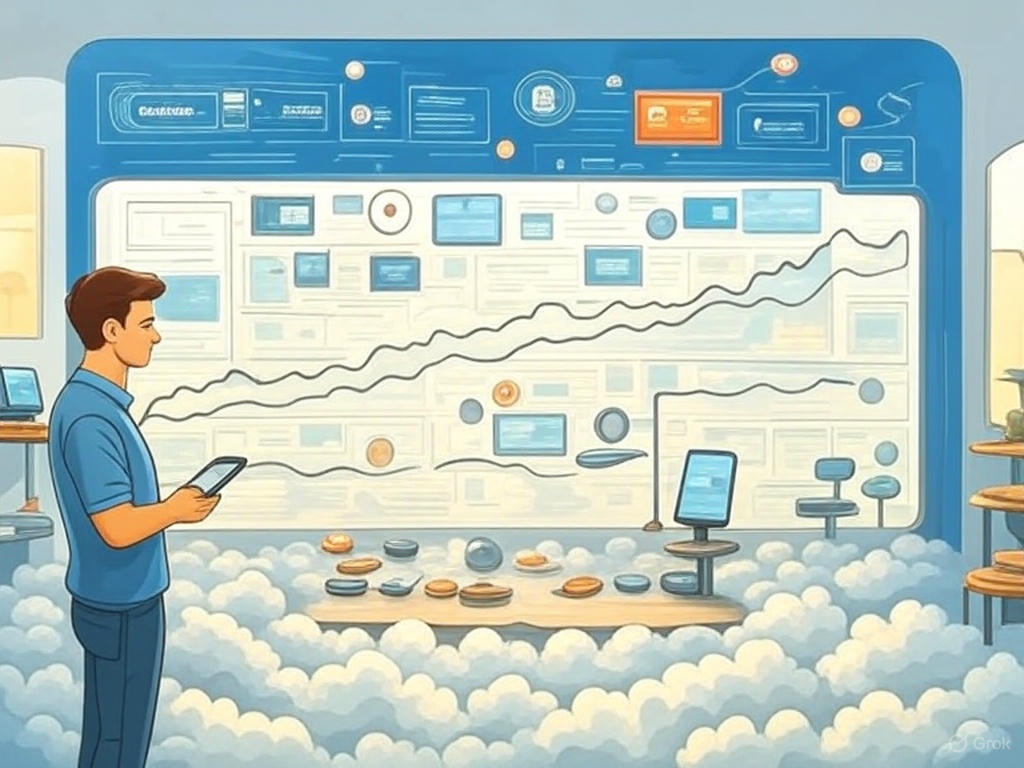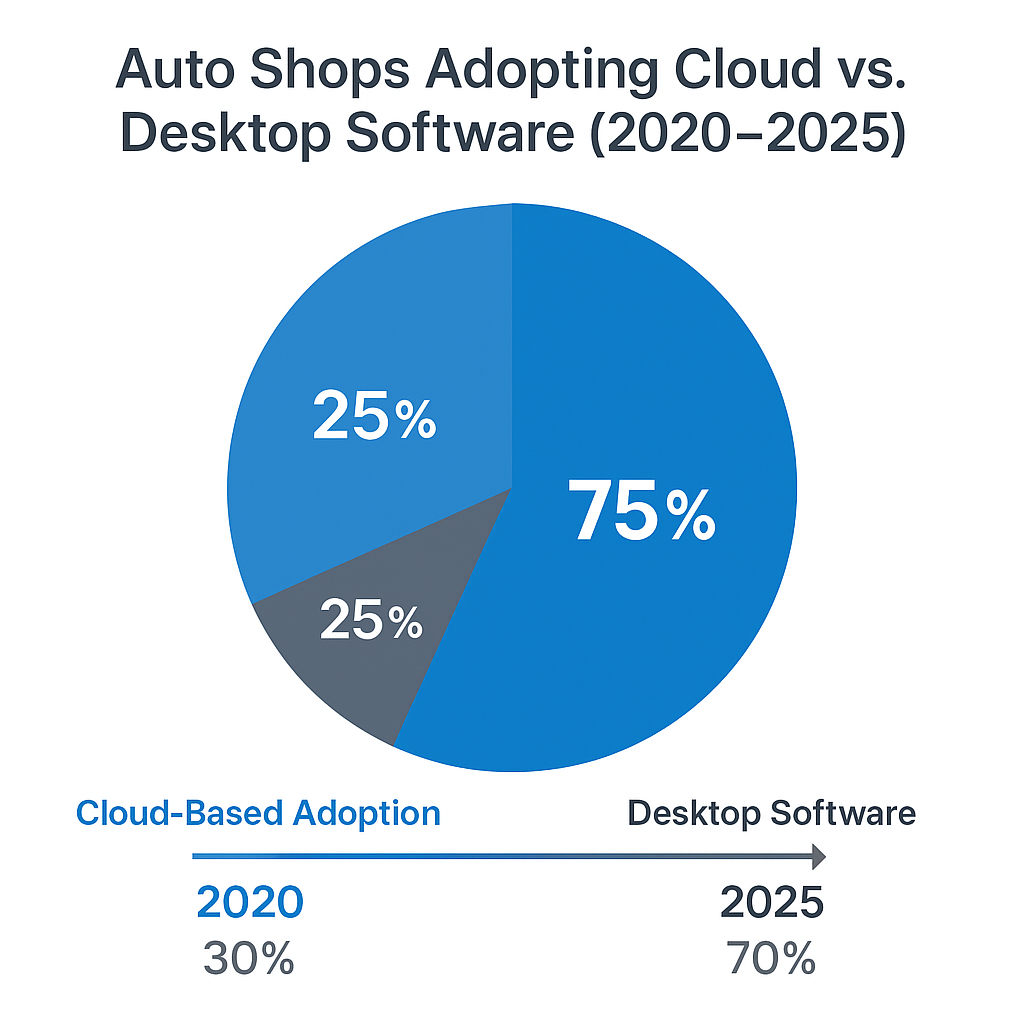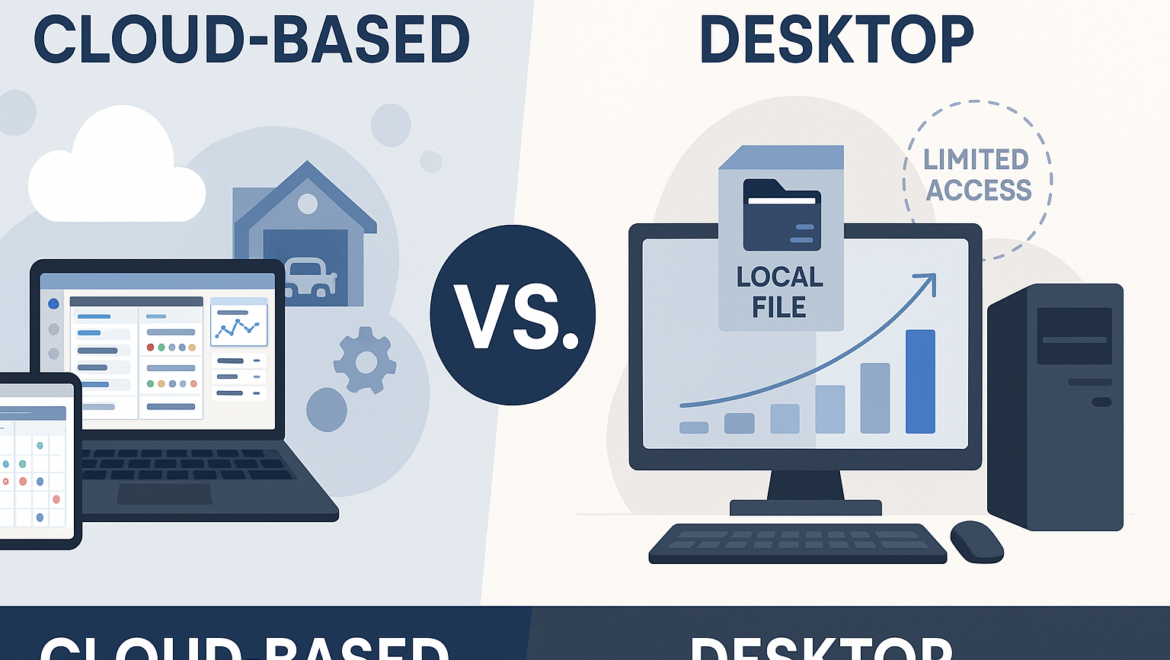Choosing the right shop management software isn’t just a tech decision—it’s a business-defining move. With the repair shop industry evolving faster than ever, 2025 brings a critical question to the forefront:
Should you stick with traditional desktop software, or switch to a cloud-based platform?
If your current system slows down your team, locks you to one location, or constantly needs manual updates, you’re probably feeling the friction. The good news? There’s a better way—and the industry is shifting fast.
In this article, we’ll break down the pros and cons of cloud vs. desktop shop software, explore what features shops actually need in 2025, and help you make the right move for your business.
The Key Differences Between Cloud and Desktop Platforms
Understanding the core differences is step one. Here’s how they compare:
Installation & Updates
-
Cloud-Based: Runs entirely in your browser—no downloads, no disks, and updates happen automatically.
-
Desktop: Installed on a single machine (or server). Updates are manual, and often delayed due to IT bandwidth or fear of bugs.
Access
-
Cloud-Based: Log in from your phone, tablet, or any computer—anytime, anywhere.
-
Desktop: Only available at the shop or through expensive VPN setups.
IT Maintenance
-
Cloud-Based: Zero IT headaches. No server management, no data backups—everything is handled by the provider.
-
Desktop: Requires local server management, routine backups, and higher risk of data loss.

Pros and Cons of Cloud-Based Software
Pros
-
Real-Time Updates: Always on the latest version, with new features rolled out seamlessly.
-
Mobile-Friendly: Technicians and service writers can update job statuses from their phones or tablets.
-
Scalable: Easily add new users, bays, or locations as your business grows.
-
Lower Upfront Cost: Subscription-based pricing reduces large capital investments.
Cons
-
Internet Dependency: Requires a stable internet connection (though some platforms offer limited offline access).
-
Ongoing Subscription Fee: May feel more expensive long term (though often offset by labor savings and efficiency).
Pros and Cons of Desktop Software
Pros
-
Offline Functionality: Doesn’t rely on internet—great if your connection is spotty.
-
One-Time License: Some software is paid once, not monthly (though often with costly upgrades later).
Cons
-
Tied to One Location: No remote access or multi-location visibility.
-
Heavy Infrastructure: Needs servers, regular backups, and IT management.
-
Slow Innovation: Feature updates are infrequent and often delayed by local installs.
What Auto Shops Need in 2025
Auto shops are no longer just brick-and-mortar spaces—they’re smart, mobile-enabled work environments. Here’s what modern operations demand:
-
Mobile-first access (phones and tablets on the floor)
-
Real-time job tracking
-
Multi-location visibility
-
Cloud sync across devices
-
Integrations with estimating, parts, and accounting tools
-
User-friendly UI for quick onboarding
Real Example: A multi-location body shop using Helios saw a 25% boost in efficiency after switching from an on-prem system, just by standardizing workflows and improving visibility.
What the Data Says: Shops Are Moving to the Cloud
According to Software Advice, over 75% of small businesses in the service sector now prefer cloud-based systems due to ease of access, automation, and lower maintenance.
And within the automotive repair industry, that number is climbing—fast. In 2023, Helios reported that over 60% of its new users were switching from legacy systems like Mitchell1 or ShopBoss.
Quote:
“We needed something that worked across all five of our locations—Helios gave us live insights and mobile control in one week. We’re never going back.” – Mark B., Shop Owner, Florida

Feature Comparison Table
| Feature | Cloud-Based (e.g., Helios) | Desktop-Based |
|---|---|---|
| Mobile Access | ✅ Yes | ❌ No |
| Real-Time Sync | ✅ Yes | ❌ No |
| Multi-Location Support | ✅ Yes | ⚠️ Limited |
| Software Updates | ✅ Automatic | ❌ Manual |
| IT Maintenance | ✅ Provider-Handled | ❌ You Handle It |
| Offline Mode | ⚠️ Limited | ✅ Yes |
| Initial Setup Cost | 💰 Low | 💰💰 High |
| Scalability | ✅ Easy | ⚠️ Requires Upgrades |
Conclusion
The verdict is clear: while desktop software may still serve niche situations, cloud-based shop management software is the future of auto repair.
It offers:
-
Flexibility
-
Efficiency
-
Control from anywhere
-
And scalability built for growth
As your shop gears up for 2025, think beyond what’s “familiar.” Think future-proof. Think mobile. Think Helios.
Ready to ditch outdated tools and embrace modern shop management?
Book a free Helios demo and see how we help auto shops run faster, smarter, and easier—starting now.



